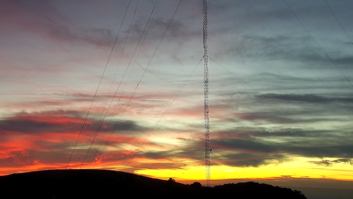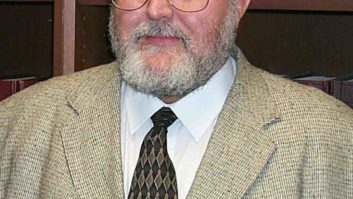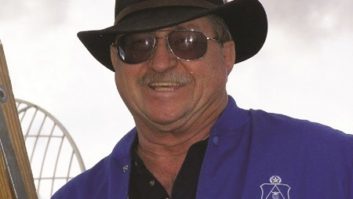Ron Rackley, one of the industry’s foremost voices on AM radio engineering, released the following in response to the statement by FCC Chairman Tom Wheeler on AM revitalization this week. Rackley is a partner in the firm of duTreil, Lundin & Rackley. He is a past recipient of the NAB’s Radio Engineering Achievement Award. Given strong interest in this subject, Radio World provides the full text of Rackley’s comments below.
FCC Chairman Wheeler’s announcement of Monday, April 13, 2015 indicated that new rules are on the way pursuant to the AM revitalization rulemaking. It provided few specifics, but it seems clear that rule changes along the lines of those proposed by the FCC in the original Notice of Proposed Rulemaking, as well as possibly other related proposals that were made and received wide support during the comment period, are being enacted to relieve the regulatory burden for many AM stations wanting to improve their coverage and/or needing to relocate their transmitter sites.
There is apparently going to be a further Notice of Proposed Rulemaking to consider new topics that emerged in the comments – like modifying the nighttime skywave protection requirements of Class A stations and developing technical standards to be used for allocation within the expanded band.Both have great merit and deserve fast-track consideration.
The Class A nighttime protection issue was mentioned by many commenters. There was wide agreement that the present standards have become obsolete — due to noise and interference in the AM band and the multiplicity of other audio services that are now available at night — and that they prevent large numbers of other AM stations from fully serving their local audiences at night.
The expanded band matter is actually unfinished business from when the FCC selected then-existing AM stations to voluntarily migrate there many years ago in an “interference reduction” scheme. The original plan was for stations that built transmitters for expanded band operation to be given five years to operate them simultaneously and then decide whether to continue their operation and cease using their old frequencies or revert to operation only on their original frequencies — so the expanded band could be opened up for use by other stations. No technical standards were established for allocations in the expanded band at that time, other than the selection criteria for migrating stations, but such standards were supposed to be developed in time to be used for allocating expanded band stations following the five year trial period.That never happened.
It is also clear that AM stations being given an exclusive pathway to FM translator operation is not going to happen under the present FCC. This is not considered good news by those who define AM revitalization as moving the programming of existing AM stations to the FM band. There are sound, logical reasons that the FCC should allow such a transition, but others wishing to utilize the FM spectrum — like the LPFM interests — can state sound, logical reasons for their opposing positions too. It all comes down to what presuppositions are used to evaluate the logical arguments, and those decisions are made in the political sphere and not by engineers. Obviously, the mood in Washington now does not favor giving AM broadcasters relief in the FM band other than allowing them to use translator frequencies in competition with everyone else.
The rule changes could be very good news for AM stations with regard to their prospects for service to listeners using existing technology with facility improvements. The changes that are coming could be a major step toward revitalizing radio service in the AM band.












